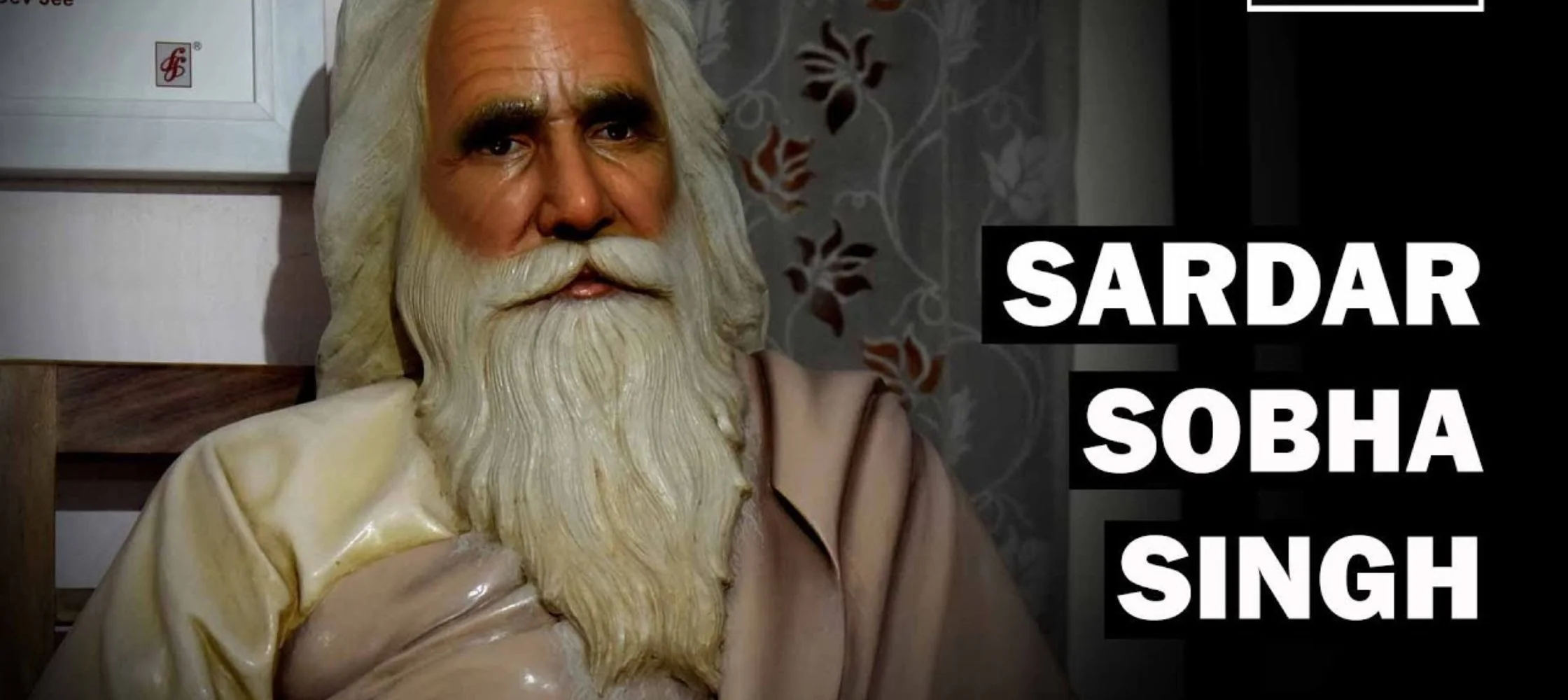
The Rising Panjab Bureau
Sobha Singh fondly remembered as Darji, a renowned artist of Punjab was born on 29 November, 1901, at Sri Hargobindpur, Gurdaspur. He was one of the greatest Indian artists of the twentieth century. His father, Deva Singh was in the Indian cavalry and Sobha Singh himself had joined British Indian Army as a draughtsman in 1919 and served till 1923. He had resigned from the army in 1923 to open his studio at Amritsar. Before finally settling down in Andretta, near Palampur in 1947, he stayed in Lahore, Delhi and Bombay. He had to leave Lahore after the partition. Andretta located in the foothills of the Himalayas was hardly known but it was Sobha Singh who brought this tiny village on the international art map by his various classic works. Further efforts by his daughter Bibi Gurcharan Kaur and her son Dr. Hirday Paul Singh, have converted Andretta into an ever- popular tourist destination for the budding artists who admire his work.
Sobha Singh was very young when his mother died. He learnt all the art by himself from a very young age. At the age of 15, Sobha Singh joined the Industrial School at Amritsar for a course in art and craft. His father never liked his interest in drawing figures as he believed that an artist always remained poor no matter how talented he is. During his 39- year stay in Andretta, Sobha Singh painted hundreds of paintings. His main work of art was focused on Sikh Gurus, their life and work. His paintings of Guru Nanak Dev Ji on his 500th birth anniversary in 1969, is the one that people believe to be the exact appearance of Guru Nanak. He also painted portraits of national leaders and heroes like Lal Bahdur Shastri, Mahatma Gandhi, Kartar Singh, Shaheed Bhagat Singh etc. His murals and paintings are displayed in the art gallery of Indian Parliament house in New Delhi.
In 1926, he went to Lahore to establish a film company and made a film ‘But-Tarash’. Sobha Singh shifted to Delhi in 1931, where he drew posters for Indian Railways and the Post and Telegraph Department. He shifted to Preet Nagar, a colony of idealists between Lahore and Amritsar where famous writers, artists and educationists settled. Sobha Singh lived there for a brief period of time in 1942. Nanak Singh, a famous novelist and Balwant Gargi, a well-known essayist were companions. He loved the blissful and peaceful life of the mountains and therefore preferred spending the rest of life in Andretta. He believed that the mind became vacant and filled with bliss when he lived in the mountains.
Sobha Singh was not in favour of painting human misery and suffering. He felt that an artist should only paint beautiful things even if it gets rejected. His medium was an oil painting on canvas but he excelled in Kangra miniature also. He only wanted to paint beauty and goodness in life which were very rare in life. He always said that there is enough misery and suffering in the world and there is no need to paint it on the paper. To him, all religions are equal and most of his paintings are on Sikhism but the struggle of the Sikhs against the Mughal Empire never appeared in his paintings.
His painting on the Sikh Guru Nanak Dev Ji reached many museums, libraries and Sikh homes. His earliest painting of Guru Nanak Ji as a child was painted in 1934. In 1937, he drew another painting on Guru Nanak, which was named ‘Nam Khumari Nanaka, Charhi Rahe Din Raat’. In the painting Guru Nanak is shown in meditation with eyes half-closed. His paintings are popular and adorn every household. His painting ‘Sohni Back to Heaven’ is an excellent work. In 1948, he painted a portrait of Mahatma Gandhi, for the Public Relations Department of Punjab.
Sobha Singh received many awards and Punjabi University, Patiala conferred a Fellowship on him in 1970. A documentary on Sobha Singh in 1973 was made by the Ministry of Information and Broadcasting of the Union Government. He was declared a state artist by the Punjab Government in 1974. Sobha Singh was also conferred with Padma Shree- the fourth-highest civilian award by the government of India in 1983.
Your email address will not be published. Required fields are marked *
29 Jan, 2024
29 Jan, 2024
29 Jan, 2024
25 Jan, 2024